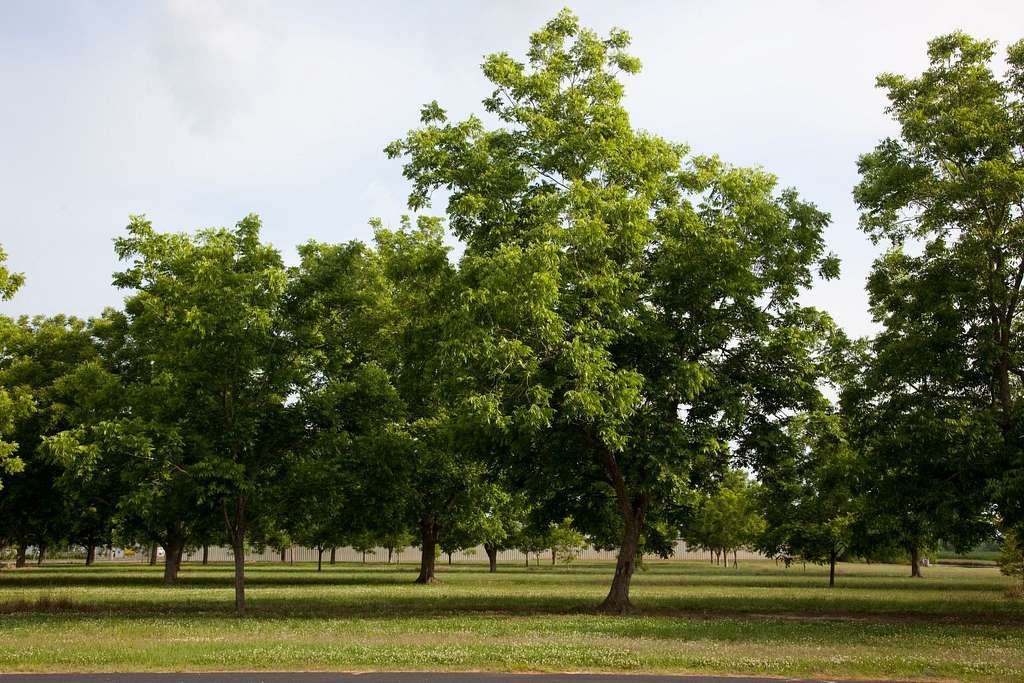The pecan tree (Carya illinoinensis) is the official state tree of Texas since 1919. It was made the official state tree by an act of the 36th Legislature in regular session and the acts of the 40th Legislature in 1927 confirmed the choice. Pecan was also adopted as the state health nut and the pecan pie is the official state pie.
Former governor James Stephen Hogg requested that a pecan tree mark his grave before he died in 1906. As a result, the native tree rose in popularity. Pecan is one of the most widely distributed trees in Texas. Popular as a yard tree and widespread in the wild, the pecan tree is native to the state and produces Texas’ only commercially grown nut. Millions of pounds of the sweet-meat, soft-shelled nuts are harvested every year for use in candy, pies, snacks, and other treats.
Here are more facts about Texas’ beloved pecan trees:
- A mature pecan tree is typically 70 to 100 feet tall, but it can also grow as tall as 150 feet and higher.
- Based on fossil remains found in Texas, native pecans were found to be existing long before humanity arrived on the scene.
- Pecan is the only tree nut native to the United States.
- The pecan is native to more than 150 counties in Texas, and is commercially grown in 30 additional counties.
- The word pecan comes from a Native American word “pacane,” which defined all nuts that need a stone to crack.
- Texas is the largest producer of native pecans, and second to Georgia in the production of hybrid varieties.
- The United States is the leading producer of pecans in the world, growing about 80% of the world’s supply. Texas, Georgia, and New Mexico produce the most pecans.
- It takes around 10 years for a pecan to reach maturity and start producing nuts. But it’s worth the wait as the tree can produce nuts for up to 100 years.
- Pecan trees outlive humans, as some live up to 300 to a thousand years.
- Pecan trees are some of the largest trees you can find, as they can grow over 100 feet tall and 75 feet wide. Their trunks can be more than three feet in diameter. Some can grow up to 24 inches in a single year.
- Because pecans are large upon maturity, most people don’t have room to plant them in small urban yards. It’s often found in places with large outdoor spaces, as well as in parks, as they make wonderful shade trees.
- There are more than 1,000 varieties of pecan, but only about 20 are commercially grown for pecan production.
- Pecans are technically not a nut, but a drupe – a fruit with stone pit surrounded by a husk. The edible portion is the pit.
- Native Americans relied on pecans as a food staple. They gathered wild pecans and combined them with fruits and vegetables, used ground pecan meal to thicken meat stews, created an energy drink with pecan milk, and brought roasted pecans as food for their journey.
- Pecan meats are prized in Texan cuisine, and pecan pie made with pecans and corn syrup has been a customary holiday dessert. Many Texans also shell the nuts and eat them out by hand.
- Besides food, the pecan tree is also prized for their beautiful wood grain used in flooring, furniture, agricultural implements, wall paneling, wood working, and even baseball bats and hammer handles.


